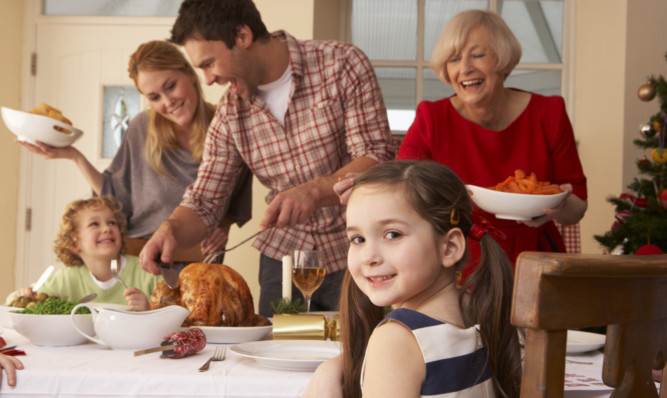
Go on, stir up an appetite for happy family dinners!
You start with good intentions. Family life is going to be like a scene from The Waltons.
Everyone sitting around the table while you put steaming plates of food before them and they politely compliment your cooking and ask for more vegetables.
Conversation flows as you all exchange the news of the day. No one interrupts, is rude, whines about cauliflower or kicks a brother or sister under the table.
This is what it means to be family you tell yourself smugly. But before too long, real life gets in the way.
There are so many distractions TV, computer games, social media, urgent business with phones mean that when mum shouts “dinner’s ready” no one responds.
Kids eat in front of the TV or take a plate up to their bedroom so their conversation with their pals isn’t interrupted.
Researchers at Oklahama University analysed the eating habits of more than 24,000 children who took part in a study which also tracked their academic achievements, behaviour and social skills.
The results published in the Journal of Family Psychology found regular family meals increased the odds of a child doing well at school by 10% and reduced the risk of bad behaviour by 8%.
Psychologists stated last week that to achieve the positive effects, families should sit down together for dinner at least four times a week. So Ma Walton was right after all.
The trouble is less than a third of British families have a meal together every night.
Fathers work late, teenagers need urgent catch-up time with technology, the Tweeting and Facebooking is compelling, younger children are watching the best bit of a DVD.
Dinner just becomes time to stock up on fuel not share conversation. I’d love to say it’s different at my house. But too often we sit with plates on a tray in front of the TV watching the news.
Not a great idea for the digestive juices as my husband has an unfortunate habit of ranting about some item with which he disagrees and I fume as I miss the vital bit of information I wanted to hear.
I don’t think Angry Man Syndrome has been explored by psychologists yet, but they’d get a prime candidate for research around 6pm at my house.
When family are visiting we sit at the table, but the little ones have discovered the buttons to press to get Peppa Pig and one brings her own Netflix.
So I know how hard it is formodern parents to re-introduce the dinner table regime into family life.
We all watch more cookery programmes than ever before. We have cupboards full of stylish casseroles and blenders. We’ve become sophisticated foodies with more adventurous tastes.
But in our busy lives we somehow cannot reinstate that habit of getting together at the end of the day to share time, food and the stories about our day.
French and Italian families manage it. They value the importance of shared mealtimes. It’s an integral part of their culture which they cherish.
Perhaps it’s time for us to re-think our eating habits. To get back to the habit of setting the table, creating a quiet, calm space where we can eat and talk.
We need to switch off the machines that are dominating our lives and just be family.
Who knows next time you shout “dinner’s ready” you might be surprised at what happens.

Enjoy the convenience of having The Sunday Post delivered as a digital ePaper straight to your smartphone, tablet or computer.
Subscribe for only £5.49 a month and enjoy all the benefits of the printed paper as a digital replica.
Subscribe